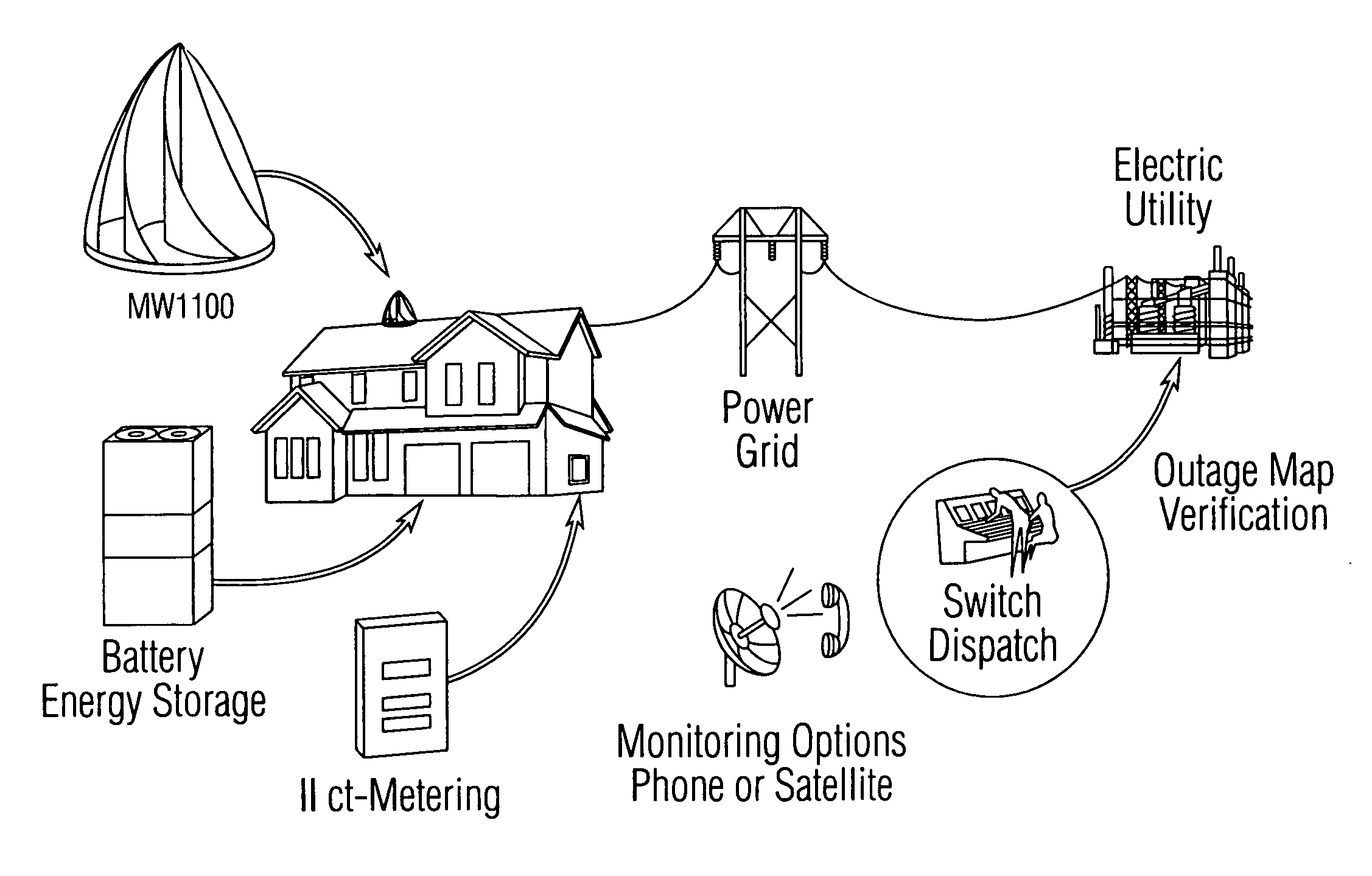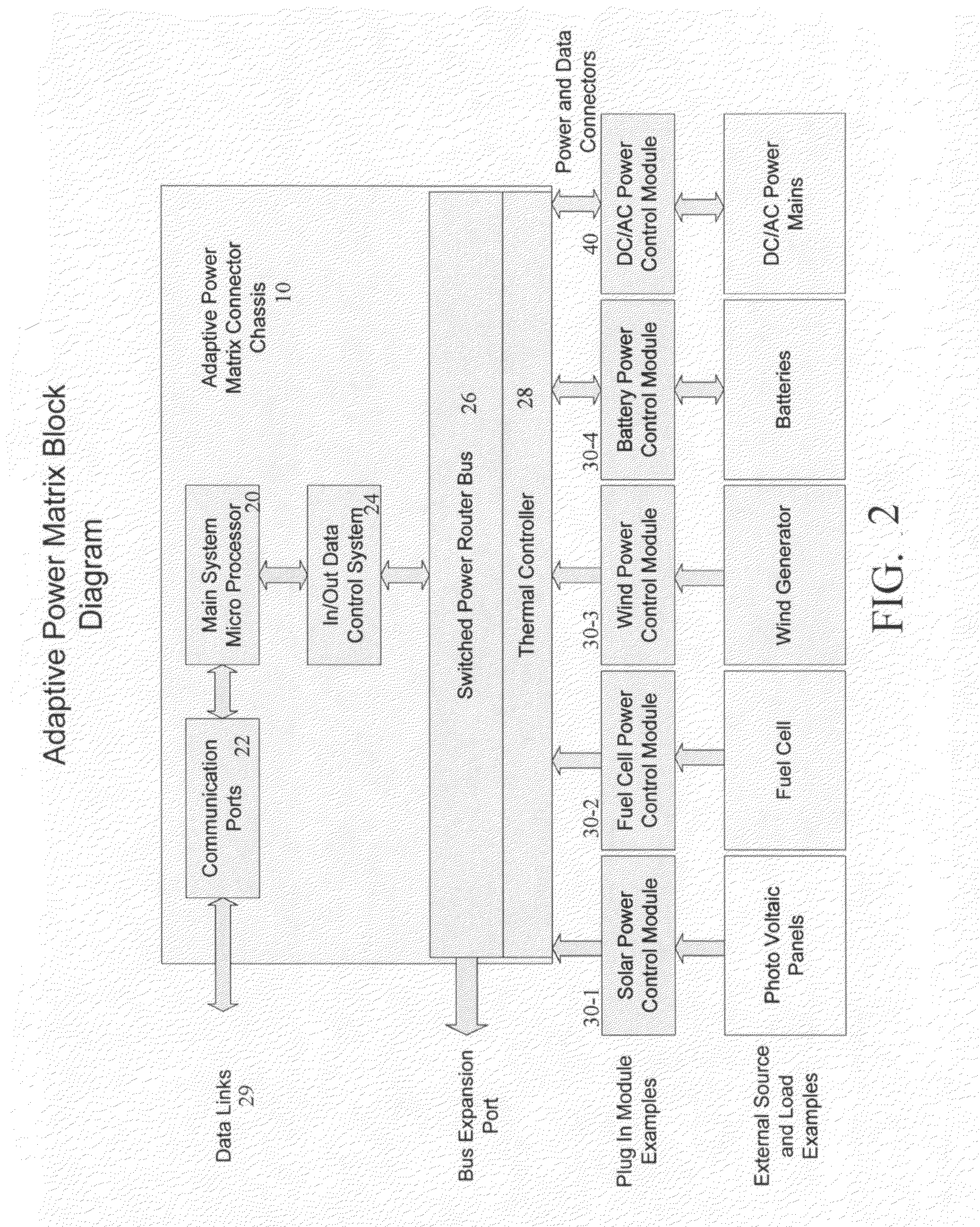Modular adaptive power matrix
a power matrix and module technology, applied in the field of module adaptive power matrix, can solve the problems of not providing a scalable modular approach with modules capable, and achieve the effects of improving the overall efficiency of the unit, increasing the overall life expectancy, and reliable output power
- Summary
- Abstract
- Description
- Claims
- Application Information
AI Technical Summary
Benefits of technology
Problems solved by technology
Method used
Image
Examples
Embodiment Construction
[0030]The present invention a modular Adaptive Power Matrix comprising a plurality of “smart” modular source modules connected in a chassis / backplane to manage different energy inputs and to provide reliable output power to widely varying loads by monitoring load requirements and matching available power sources in real time. Each smart module uses Multiple Power Matrix Tracking techniques to control the process of stepping up or down any higher or lower input voltages and which bus would perform the most efficiently.
[0031]FIG. 2 is a block diagram of a modular adaptive power matrix according to an embodiment of the present invention. The system generally employs a chassis 10 including a housing and backplane (to be described) that accept plug-in power modules 30-1 . . . n including power converters each dedicated to managing one of various energy sources such as local photo-voltaic panels, fuel cells, wind sources, as well as a battery backup system and connection to a utility grid...
PUM
 Login to View More
Login to View More Abstract
Description
Claims
Application Information
 Login to View More
Login to View More - R&D
- Intellectual Property
- Life Sciences
- Materials
- Tech Scout
- Unparalleled Data Quality
- Higher Quality Content
- 60% Fewer Hallucinations
Browse by: Latest US Patents, China's latest patents, Technical Efficacy Thesaurus, Application Domain, Technology Topic, Popular Technical Reports.
© 2025 PatSnap. All rights reserved.Legal|Privacy policy|Modern Slavery Act Transparency Statement|Sitemap|About US| Contact US: help@patsnap.com



